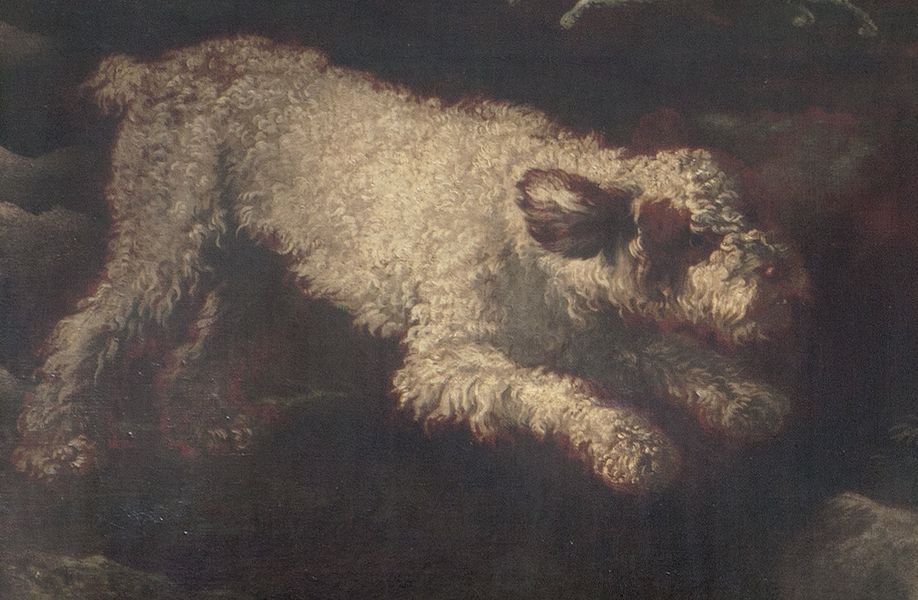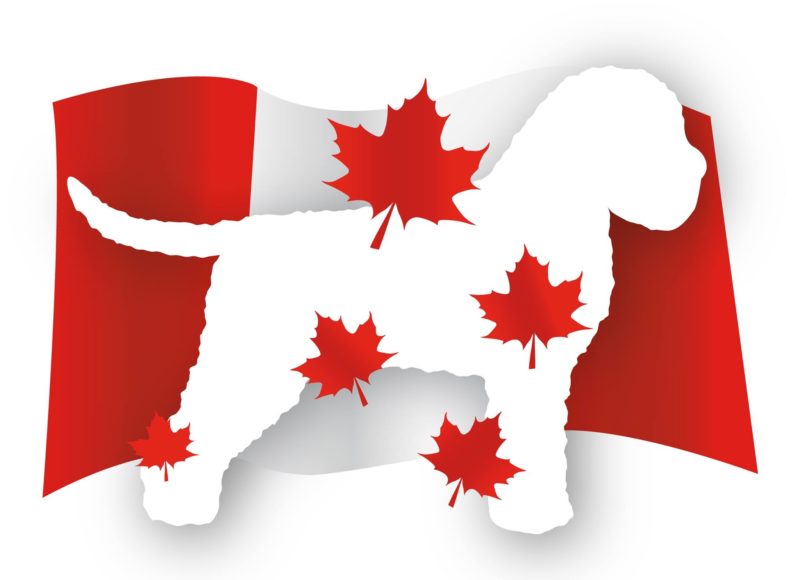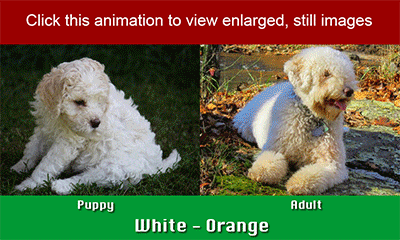About the Lagotto
-
Lagottos are affectionate, undemanding and devoted dogs. They make an excellent companion and enjoy being with their owners as they are very loyal and loving.
They are a working dog, are easy to train and eager to please. Being intelligent it is important for their minds to be occupied and they do well at agility or obedience training.
Whether working or playing, they have the ability to concentrate at the task at hand and are not easily distracted by other scents or animals.
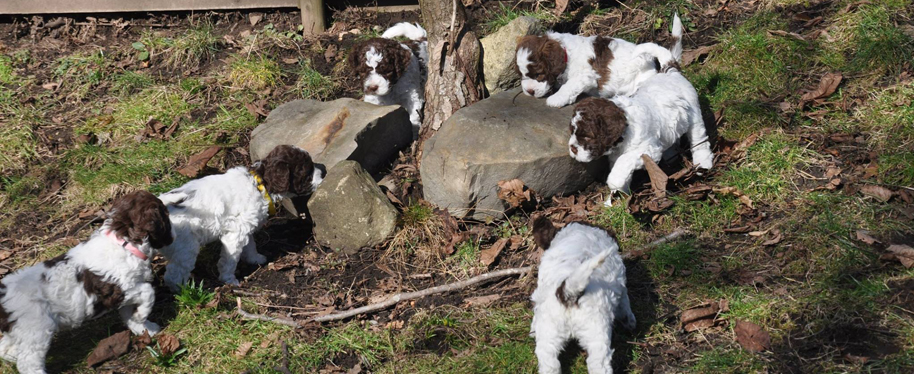
Frequently Asked Questions
Ancient Working Breed
The Lagotto Romagnolo is an ancient breed originating in the Romagna region of Italy. It is believed that the Lagotto is the ancestor of all modern-day water dogs. Although the role of the Lagotto has changed over time, they still retain features that made them such an efficient water retriever.
The very curly double coat covering the entire body;
Coat on the inside of the ears to prevent water from seeping in;
Their incredible sense of smell and hearing;
The breed’s love of the water.
In 7th century BC (Etruscan period), marsh men (known as “Valleroli”) hunting waterfowl were aided in their task by a distinctive little dog. The word Lagotto is Romagnan dialect for duck dog which is how the Lagotto got its name. The hunters used flat bottomed punts to move through the shallow marshes so their dogs were small and light enough to fit in these punts, hence the small to medium size of this breed. Centuries later, in an effort to increase agricultural land, the marshlands were drained thus causing the disappearance of waterfowl and this little dog had to find a new occupation. Owners of these little dogs began to use them for seeking the very valuable and cherished tuber/truffle.
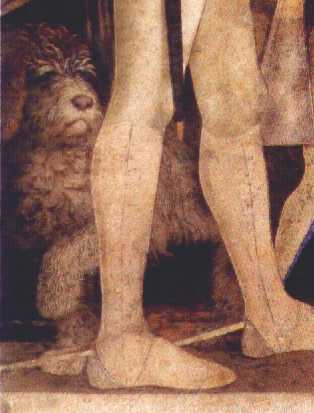
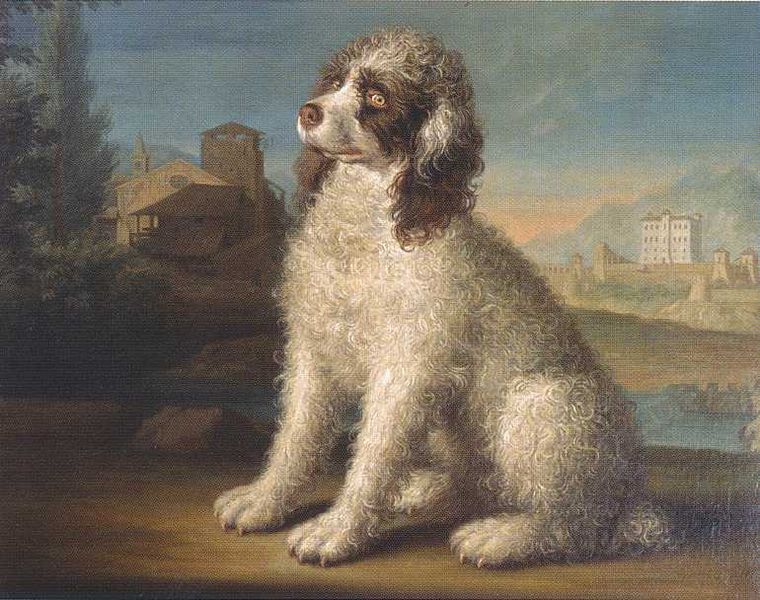
The Truffle Dog
Today, the Lagotto, often referred to as the Italian Truffle dog, is now the only purebred dog in the world recognized as a specialized truffle searcher. At present, the diverse talents of this breed are still only being discovered. The phenomenal agility of the Lagotto paired with its working drive, unsurpassed scenting ability has caused different avenues to open for the use of their incredible talents. In the medical field they are now being used to detect seizures, cancer, moisture and mold, to name just a few. The Lagotto are also being used as therapy dogs, search and rescue, truffling and, of course, as family companions.
As family companions they are great swimmers, excellent on boats and can usually adapt to any lifestyle with enough exercise, mental stimulation and human companionship. Lagotto dogs are also well suited to the demands of agility, rally or other types of trials. They have the intelligence and trainability combined with the athletic ability required to strive in this type of work.
History of the Lagotto Canada
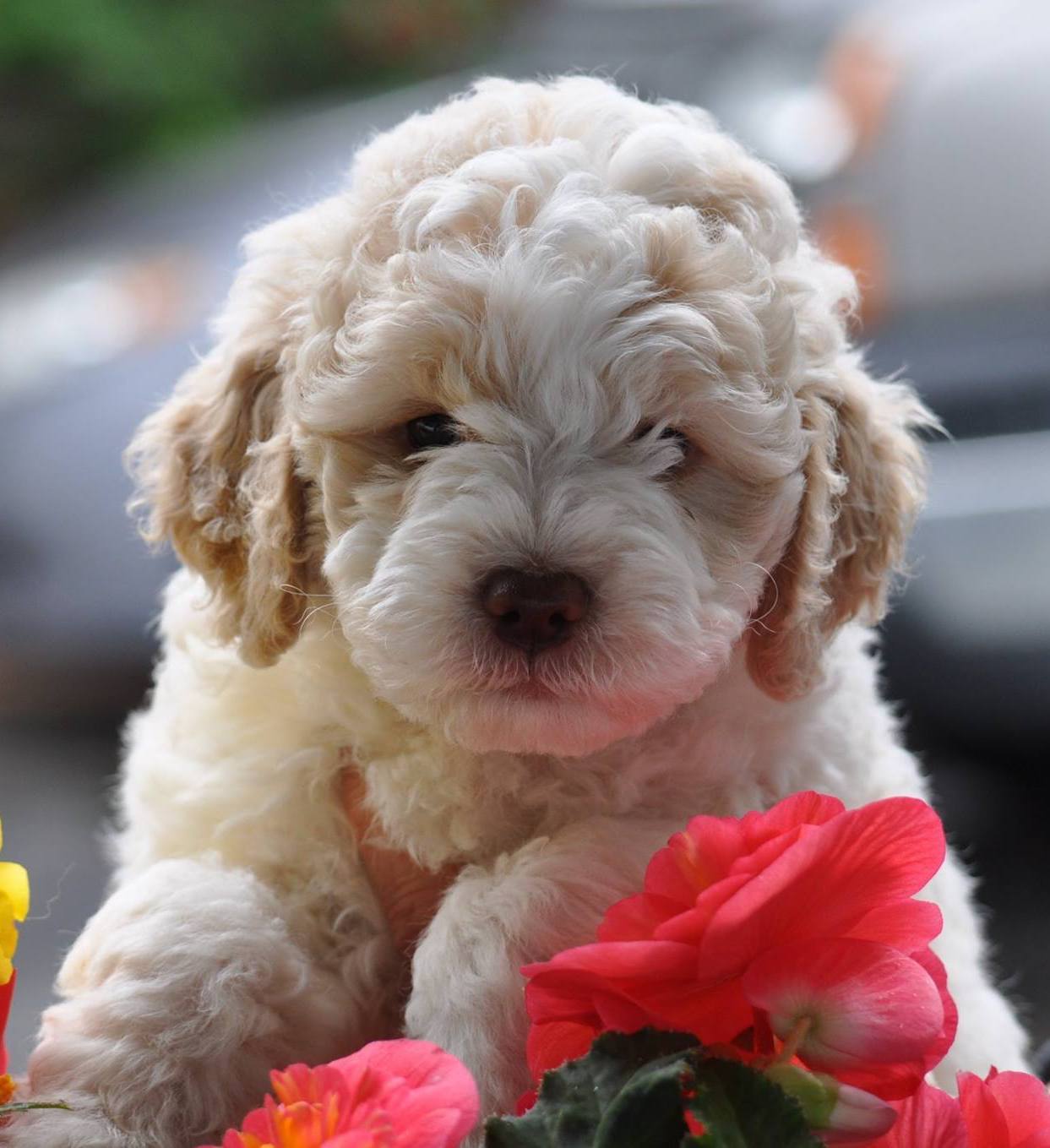
In 1999, the first known Lagotto Romagnolo imported to Canada came from the famous delle Farnie kennel in Italy and was imported to Alberta. This became the first Lagotto Romagnolo breeder in Canada and was soon followed by another breeder in Ontario in 2000 and another in Nova Scotia in 2004.
Although these pioneer Lagotto breeders have since retired from breeding, we will always be grateful to them for introducing this wonderful breed to Canada.
On July 1st, 2012 the Canadian Kennel Club officially recognized the Lagotto as a listed breed. Although the breed is not yet fully recognized by the CKC, Canadian Lagotto Romagnolo breeders and owners are proudly showing their dogs in the ring and striving to educate fellow Canadians about our wonderful breed.
Update: The Lagotto Romagnolo Club of Canada has since met all of the requirements to have the Lagotto officially recognized in Canada. On December 21, 2016, the CKC released official referendum results identifying that the CKC membership had voted in the affirmative to accept the Lagotto Romagnolo into full recognition. These results have been submitted to Agriculture Canada for approval. Please note that at this time, the Lagotto Romagnolo remains a Listed breed with the Canadian Kennel Club.
History of the Lagotto Romagnolo
Excerpted and adapted from “Lagotto Romagnolo, International Book of 2003; C.I.L”.
The name Lagotto derives from the breed’s original “career” as a water dog. In the local dialect of the Romagna “Càn Lagòt” is synonymous with “water dog” or “wetland hunting dog with crimped, curly coat”. A sharp aptitude for searching, a steep learning curve and an unbeatable sense of smell, would, in time, make the Lagotto a very efficient truffle-finder.

Over the decades, land reclamation steadily shrunk the immense wetlands of Comacchio and other parts of the Romagna. The “Vallaroli“ practically disappeared and the Lagotto gradually lost it’s function as a water dog and specialized more and more in truffle finding. The transition took place between 1840 and 1890. Between the two world wars, almost all truffle dogs in the Romagna and surrounding areas were Lagotti.
Even as far back as 1920 the Lagotto was well known in the valleys of the Romagnolo Apennines, in the Valle del Senio, Valle del Lamone and especially in the Valle di Santerno. Back then no-one was interested in the Lagotto as a pure breed – the existing breeds were considered to be more than sufficient and the cross-breeds were often even more appreciated on account of their robustness, character and resistance to disease. Truffle hunters have always bred their dogs on an entirely empirical basis (outside of any genetic rules), taking into account only the immediate, practical outcome – a brilliant truffling dog, whether Lagotto or not.
The continued in-breeding of the Lagotto by the Valleroli of Comacchio, resulted in an ‘exhausted’ Lagotto in the Romagna valley. At the same time, repeated and ungrounded crosses with other breeds introduced much foreign blood into the breed.
However, credit must be given where credit is due. The truffle hunters of that period did not let our Lagotto fall by the wayside. It has survived to this day – almost by a miracle – in a near-perfect phenotypic and genotypic form.
Towards the mid 1970s a group of Romagna-based dog lovers decided to save the breed, which risked extinction as a result of the incompetence, ignorance and negligence of owners. The group was led by the gentlemanly Quintino Toschi, President of the local dog society and the E.N.C.I. breeder and judge Prof. Francesco Ballotta (who still remembered the Lagotti of his youth perfectly). They were supported by the dog expert, judge and world-famous breeder, Dr. Antonio Morsiani and Lodovico Babini, a Romagna-born dog lover with extensive experience. They were to set a genetic reconstruction program in motion that would save the Lagotto from the one-way path to extinction. The reunification of the two parallel histories of the Lagotto – the one that took place in the wetlands and the one that took place on the Apennine hills – were to lay the basis for the renewed purity of the breed.
With the founding of the Club Italiano Lagotto (C.I.L. – Italian Lagotto Club) in Imola in 1988, which now has 300 members all over the world, a firm foundation for official acknowledgement of the breed by E.N.C.I. and F.C.I. was created.
Official recognition by E.N.C.I., with approval of the morphological Standard drawn up by Dr. Antonio Morsiani (following years of biometric measurements on hundreds of subjects), was achieved in 1992. In 1995, thanks to the constant dedication of the Club and its technical committees, provisional international recognition by F.C.I. was won.

In the meantime the breed has enjoyed European and worldwide success and the number of puppies registered at the various F.C.I., British and American Kennel Clubs is constantly growing. For example, in Italy, 545 pups were registered in 1994 and nearly 900 in 2002 – a near-doubling of births in just 9 years. In countries such as Switzerland, Belgium, Germany, France, Finland, Norway, Sweden, Great Britain, USA and Australia the number of registered puppies has increased tenfold – and in some cases a hundredfold.
In order to safeguard and coordinate proper morpho-functional selection at the international level, 1997 saw the establishment of U.M.LAG (World Union of Lagotto Clubs – Unione Mondiale dei Club Lagotto Romagnolo), the president of which is Dr. Giovanni Morsiani. Lagotto Clubs in the above-mentioned countries are members of this association and there is a constant stream of affiliation applications from new clubs all over the world.
The main goal of U.M.LAG. is to ensure the pure breeding of the Lagotto outside the borders of its homeland. The various national clubs should be informed about changes in the breed standard and working standard and about any breed specific diseases or other problems. This information exchange takes place mainly at a technical seminar which is organized during the yearly C.I.L. RADUNO. Ever more often, national Lagotto clubs take the initiative to communicate breed specific information over their borders. Special mention deserves to go to the world-wide Lagotto data bank, created and maintained by Laura Tanos of the Hungarian Lagotto Club (www.lagotto.hu).
An July 6, 2005, the Lagotto Romagnolo was officially recognized by the F.C.I. as the thirteenth breed of Italian origin.
